Yoga and bike: the perfect combo for cyclists
01 February 2025
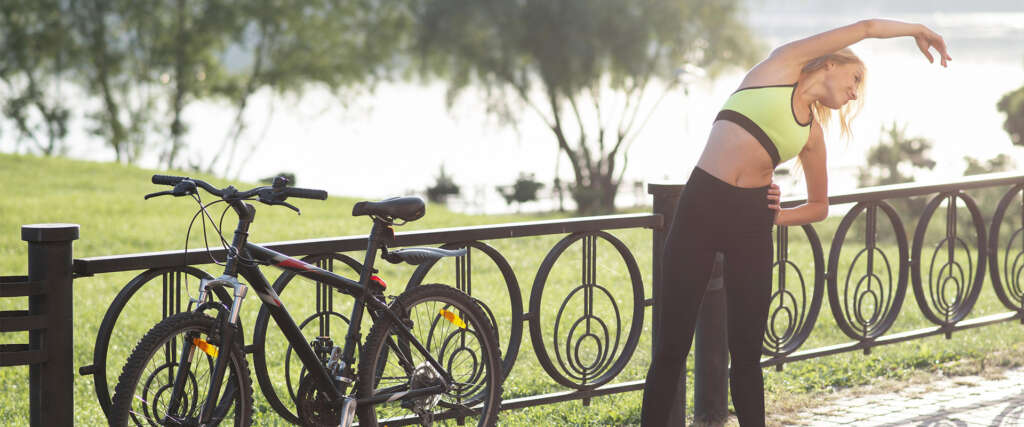
Cycling is a physical activity with many benefits. It improves the cardiovascular system, optimises blood circulation and strengthens muscles and bones. As well as being an environmentally-friendly mode of transport, it boosts endurance and promotes better overall health. However, this discipline places intense demands on certain muscle groups and imposes repetitive postures that can cause tension and imbalance in the body. This is where yoga comes in as an ideal complement to prevent injury and improve performance.
Yoga: a practice with multiple benefits
A healthy mind in a healthy body. That’s what yoga is all about. The word ‘yoga’ means ‘union’. The aim of this practice is to unite body and mind through a series of postures. The main advantage of yoga is that it requires very little equipment and can be practised anywhere. Yoga is more than just a stretching exercise. The benefits of yoga are numerous:
- Physical: yoga strengthens the spine, improves posture and reduces back and neck pain caused by stooping over on the bike. It also promotes blood circulation and optimises the functioning of several systems, including the lymphatic and digestive systems.
- Psychological: it improves concentration and helps to manage stress, key factors in maintaining good endurance and staying calm in the face of the challenges of cycling.
- Respiratory: breathing plays a central role in the practice of yoga. Learning to breathe better optimises muscle oxygenation and improves performance, particularly during difficult climbs or time trials. Deep, controlled breathing also reduces fatigue and increases resistance to effort.
Why combine yoga with cycling?
After a long cycle ride, it’s not uncommon to feel tension in the lower back, shoulders and legs. The repetitive movements of pedalling can lead to muscle stiffness, particularly in the quadriceps, hamstrings and buttocks. With its varied postures and breathing exercises, yoga stretches, strengthens and relaxes the muscles involved, while promoting better recovery.
How do I start yoga?
While the ideal way is to take classes with a teacher in a yoga studio, you can also start at home with videos for beginners. The important thing is to take the time to learn the basics and to start gradually. Once you feel comfortable, there are many sessions specially designed for cyclists, available on online video platforms.
When should you practise yoga to optimise your cycling performance?
- Before a ride: Incorporating a few dynamic postures before a bike ride helps to gently wake up the body and prepare the muscles for exertion. A yoga-inspired warm-up session stimulates joint mobility and promotes greater range of movement. Postures such as downward dog or sun salutation activate key muscle groups and improve circulation.
- After an outing: Yoga helps to release accumulated tension, makes muscles more supple and reduces aches and pains. Practising a few yoga exercises will act as counter-postures to those you have on your bike. These yoga postures will enable you to rebalance your upper body. These exercises will have the advantage of opening the collarbones and chest, raising the sternum (to leave more room for the heart and lungs, which are compressed with your posture on the bike), making the upper back more supple and relieving back pain, and resting the head and neck muscles.
- Outside cycling: To maximise the benefits, regular yoga practice is recommended. A few minutes a day is all it takes to strengthen the muscles essential for cycling and improve flexibility. One 45-minute session a week can be effective, as can three 15-minute sessions spread over the week.
Simple yoga positions to do while cycling
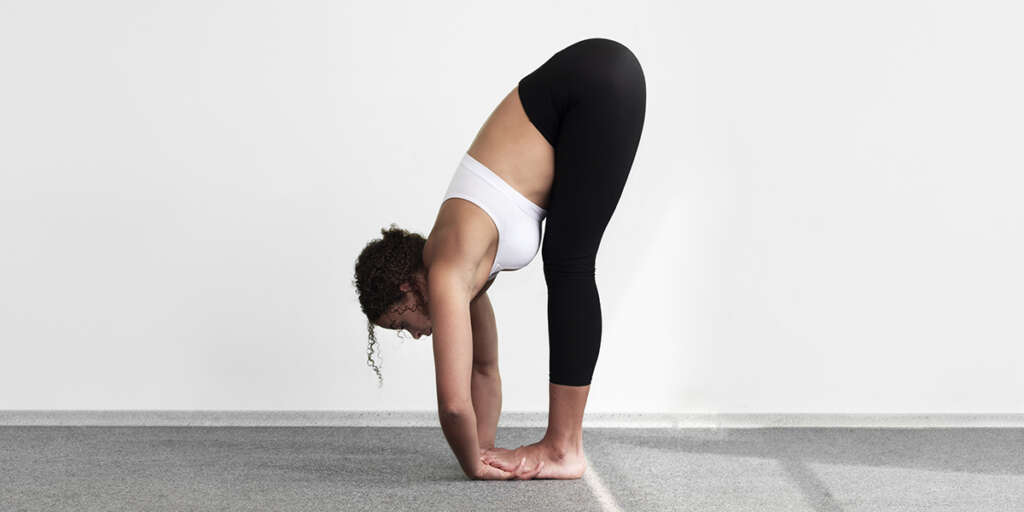
Stork pose or Uttanasana
Standing with your feet together or slightly apart, slowly bend forward, keeping your legs straight or slightly bent if necessary. Let your head fall towards the floor and relax your neck and shoulders completely. Try to grab your ankles or put your hands on the floor.
> Stretches the hamstrings and lower back, which are often tense after long outings. It also improves blood flow to the head, aiding recovery.
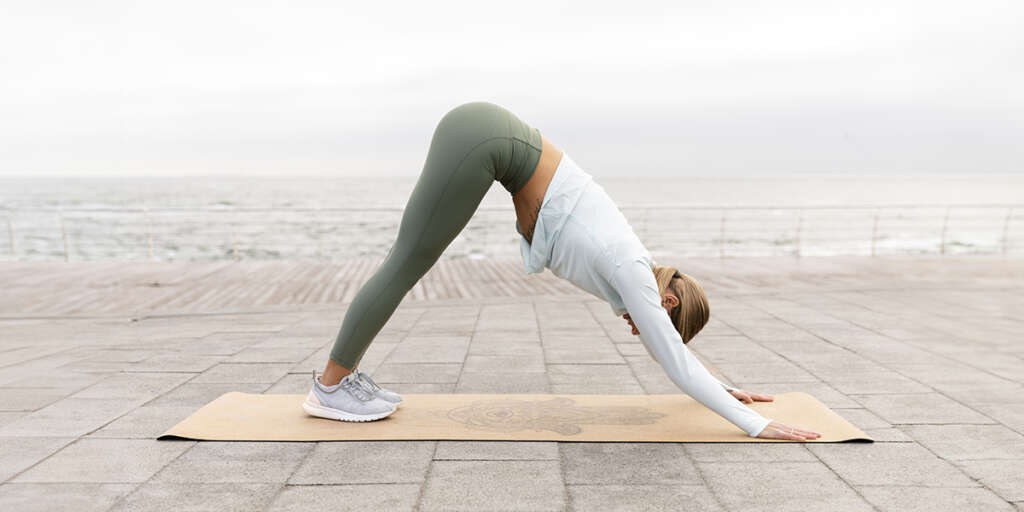
Downward Dog or Adho Mukha Svanasana
To achieve this posture, start on all fours, with your hands under your shoulders and your knees under your hips. Anchor your toes in the ground and push on your hands to raise your hips towards the sky, trying to stretch your legs while keeping your heels on the ground. Your body forms an inverted V. Hold the posture while breathing deeply.
> Effectively stretches the calves, hamstrings and lower back, which are often put under strain when pedalling. It also helps to strengthen the shoulders and arms, which are essential for a good grip on the handlebars.
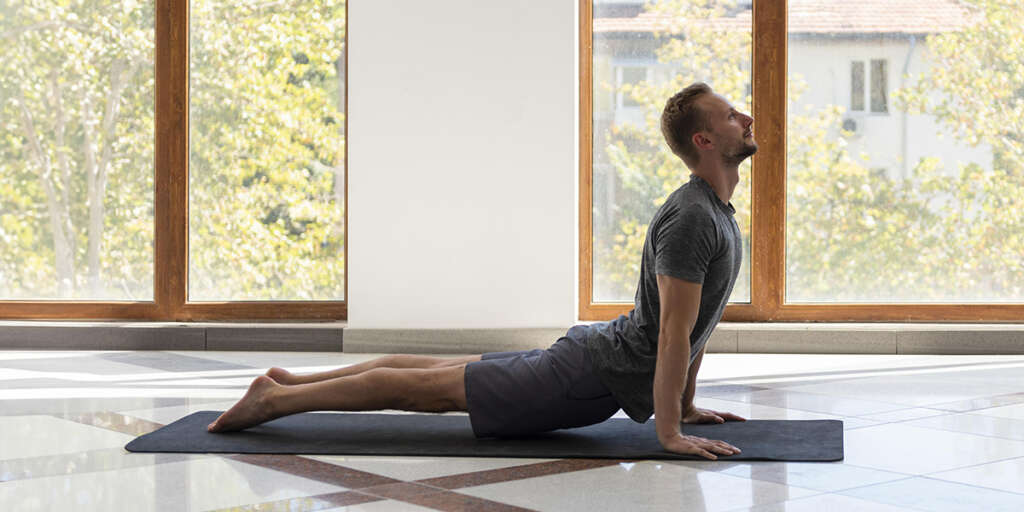
Dog’s snout facing the sun or Urdhva-Mukha-Svanâsana
Lie on your stomach, place your hands under your shoulders and push to straighten your torso by stretching your arms. Keep your legs straight and your toes pointed. Only your hands and the tops of your feet touch the floor. Open your chest wide and look slightly upwards.
> Counteracts the stooped posture of the cyclist by opening the chest and relaxing the lower back. It also strengthens the arms and wrists, which are put under strain on the handlebars.
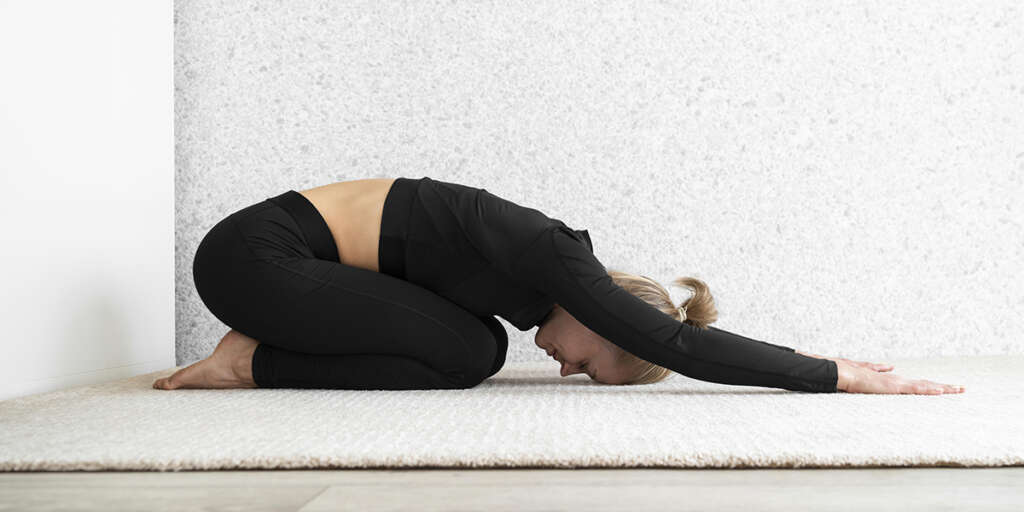
Child’s pose or Shishuasana
Kneel down, sit on your heels, then bend forward, stretching your arms out in front of you or alongside your body, palms facing the sky. Rest your forehead on the floor and breathe slowly and deeply.
> Relieves tension in the lower back and shoulders, two areas that are often tense from bending over on the bike. This posture also promotes recovery by relaxing tired muscles.

Butterfly pose or Badhakonasana
Sit on the floor, join the soles of your feet together and let your knees fall naturally outwards. Grab your feet with your hands and straighten your back. For a more intense stretch, tilt your torso slightly forward.
> Improves hip flexibility and groin opening, reducing the strain of prolonged sitting. Also improves knee mobility.
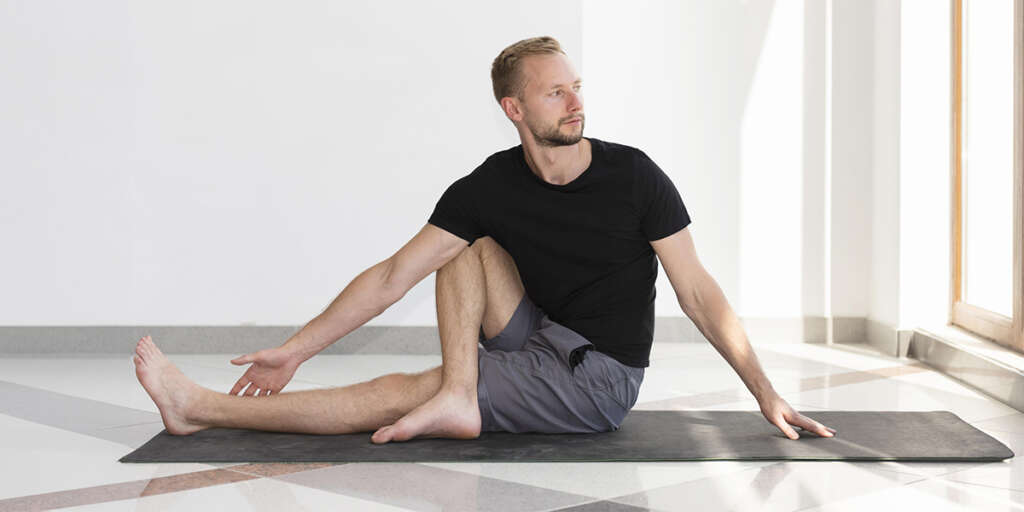
Twist pose or Vakrasana
Sit with your legs straight out in front of you. Bend your right leg and place your right foot on the outside of your left knee. Put your right hand behind you for balance and place your left elbow on the outside of your right knee. Gently turn your torso to the right and look over your shoulder. Hold before repeating on the other side.
> Relieves tension in the spine and lumbar region, often put under strain by prolonged posture on the bike. Also improves trunk mobility, essential for good posture on the bike.
Yoga and cycling complement each other perfectly. While cycling puts certain muscles under intense strain, yoga helps to relax them, improve posture and strengthen parts of the body that are often neglected. By incorporating this discipline into your routine, every cyclist can optimise performance, prevent injury and ride with greater comfort and ease. It’s a great way to strike a balance between effort and recovery!
Read all our other cycling tips on our blog.